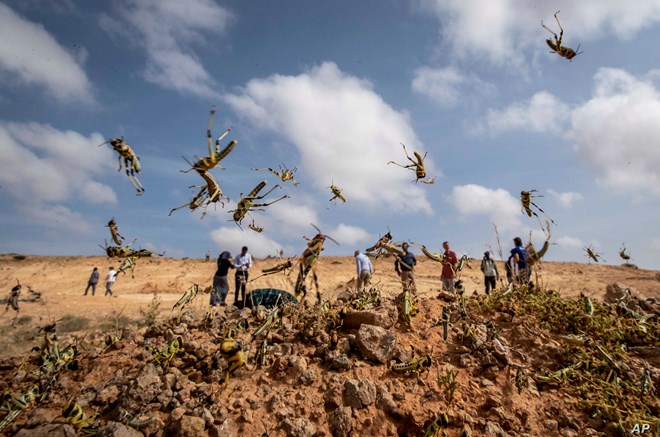
Saturday July 10, 2021

Young desert locusts that have not yet grown wings jump in the air as they are approached by a visiting FAO delegation, in the desert near Garowe, in the Puntland region of Somalia, Feb. 5, 2020.(AP Photo/Ben Curtis)
The Food and Agriculture Organization of the United Nations (FAO) said it has scaled up intensive aerial control operations against numerous immature desert locust swarms in northwest Somalia.
In its latest update released on Thursday evening, the UN food agency said there was no locust seen during surveys in the northeast state of Puntland.
“Mainly aerial control operations continue against immature swarms and the few remaining late instar hopper bands on the escarpment and plateau in the northwest (Somaliland),” FAO said.
It said the effectiveness of current survey and control operations in northern Somalia and eastern Ethiopia will influence the magnitude of swarm migration to northeast Ethiopia.
So far migration has been limited but more swarms are likely to arrive this month, mature and lay eggs, it said.
According to the FAO, the scale of the migration as well as the timing and location of July-September rainfall, which is predicted to be higher than normal this year, will determine the level of breeding this summer in the Afar region.
The UN agency said some of the swarms have started to migrate as there has been an increase in sightings and cross-border movements during the past few days in southern Djibouti, eastern Ethiopia and in the Afar region of northeast Ethiopia along the eastern escarpment of the Amhara.
According to the UN, locusts are the world’s oldest and most destructive migratory pest.
An average swarm, which contains up to 40 million insects, can travel up to 150 km in a single day and can devour enough food to feed 34 million people within that time, according to the UN.